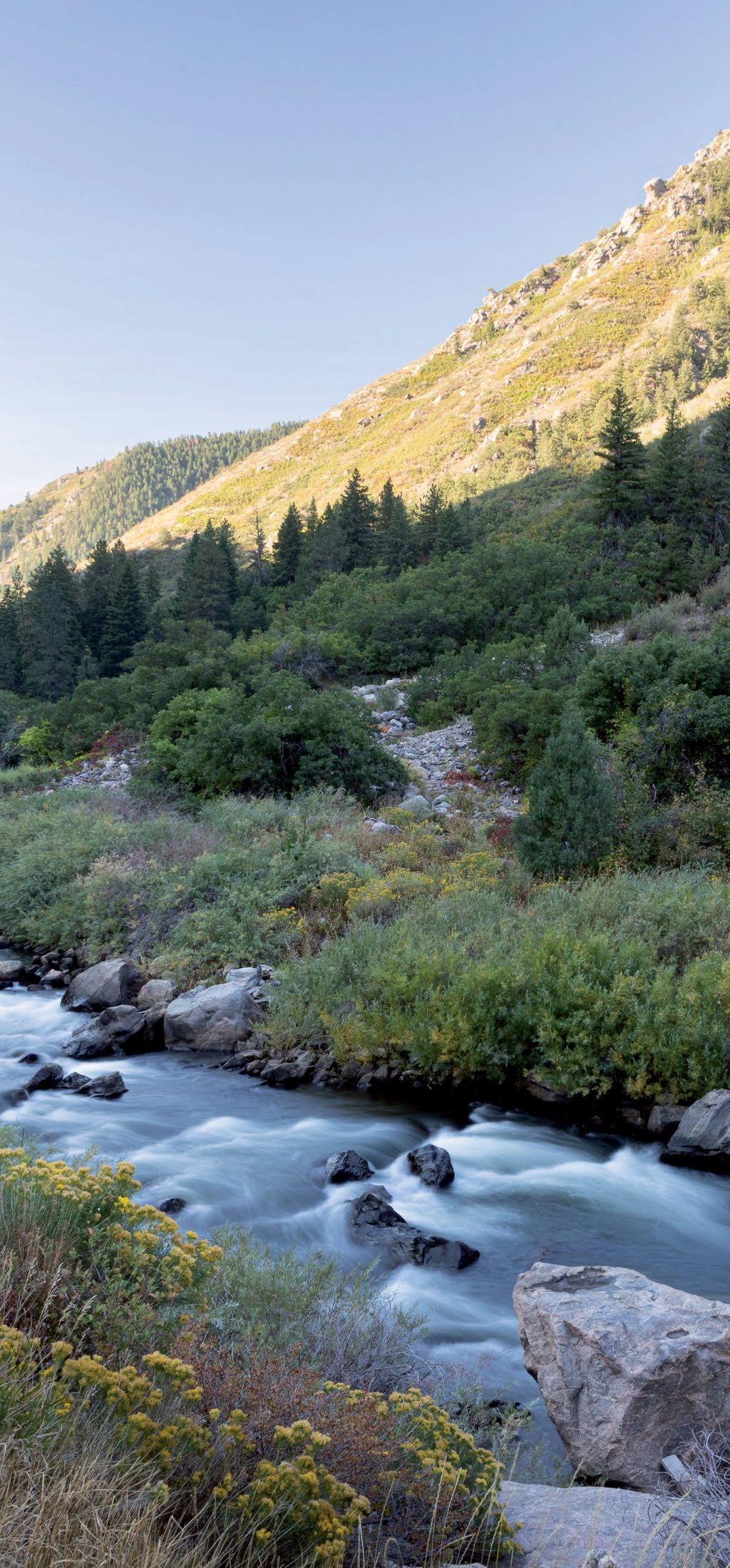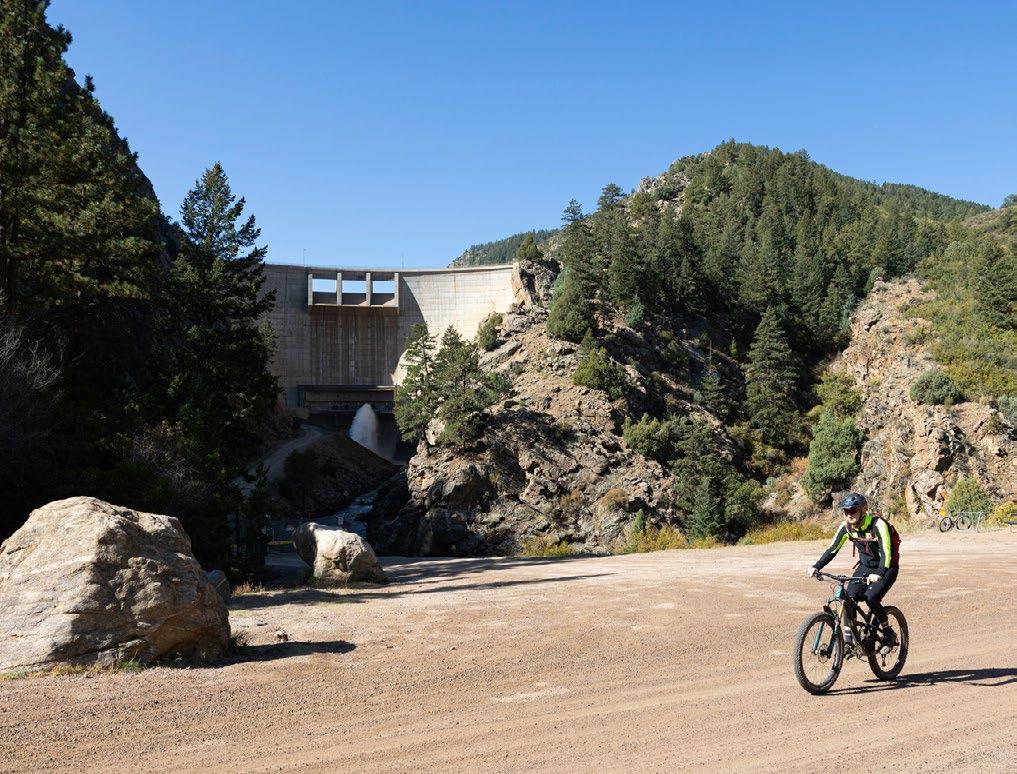
2 minute read
Creative Problem-Solving Flowing In Colorado
from Olsson Update - March 2023
by Olsson
By Dave Elsesser, Communications
Tucked among the Rocky Mountain foothills 20-orso miles southwest of downtown Denver, a small but mighty reservoir pools on the South Platte River.
Strontia Springs, opened in 1983 by Denver Water, is among the most important bodies of water on Colorado’s Front Range. Approximately 80 percent of the household water the Denver utility delivers to the area’s 1.5 million residents passes through the reservoir. Add the facility’s capacity for generating more than 1 megawatt (MW) of hydroelectric power, and you can see how important the reservoir is to the utility and the quarter of Colorado’s population it serves.
Multiple challenges – many related to wildfires – have dogged Strontia Springs recently, but few have been as urgent as those in 2018 when Denver Water faced the double whammy of an expiring project license and outdated technology.
Over nearly two years, Environmental Technical Leader Jody Glennon and Olsson’s Colorado Environmental team stepped in to help Denver Water effectively turn two negatives into a positive.

Jody and her team helped avoid a cumbersome relicensing process by taking advantage of a Federal Energy Regulatory Commission (FERC) option to exempt smaller dam facilities like Strontia Springs from licensing. And they participated in discussions on updates to technology that would allow the dam to produce approximately 15 percent more electricity (1.25 MW, up from 1.09 MW).
They also helped the utility with outreach, keeping the public safe and informed about an area frequented by outdoor enthusiasts.
Jody’s project management, impressive when you consider the project was one of her first at Olsson, merits this month’s Engineering Possibilities shout-out.
“That was one site walk that I especially enjoyed,” Jody said. “Being in nature and seeing people – walkers, runners, fishermen, birders, cyclists – and the resident herd of bighorn sheep all enjoying a space so close to a 243-foottall feat of engineering was pretty cool.”
Olsson’s contributions at Strontia Springs came at a good time for Denver Water. In recent years, sediment buildup from post-wildfire runoff has threatened the reservoir’s available capacity.


“There is a real chain reaction that happens from the wildfires in our state,” Jody said.
Because it’s effective in perpetuity, the licensing exemption affords Denver Water more opportunity to focus on environmental issues like post-wildfire runoff. It also could open the door for Denver Water, or other clients, to tap Olsson for more applications for FERC license exemptions. Hydroelectric facilities must be relatively small – with capacities of 10 MW or less – to be eligible to apply for an exemption.
Jody enjoys projects that require planning, strategizing, negotiating, and working with the public and regulatory agencies. Especially when a project means doing well by our communities; in this case, ensuring access to clean drinking water.
“Anytime you can help your client achieve their goals, improve reliability and sustainability and better the lives of people, that’s rewarding,” Jody said.
“I’d like to do more projects like this one.”










